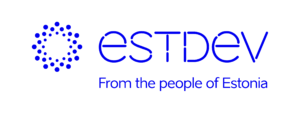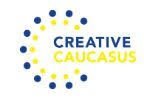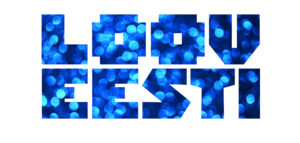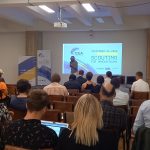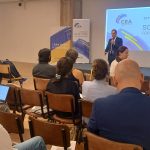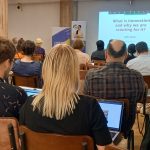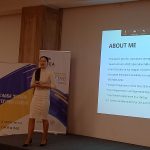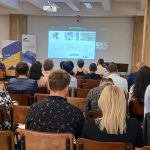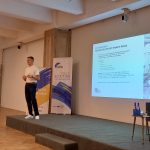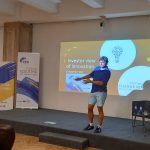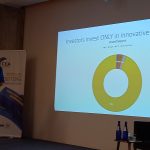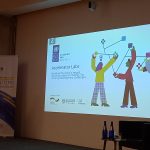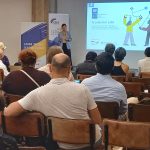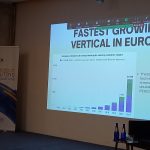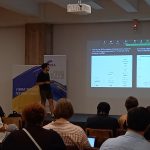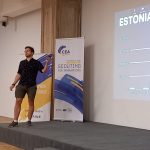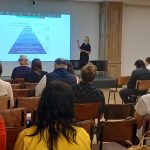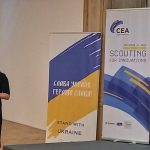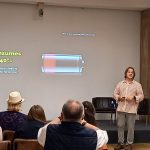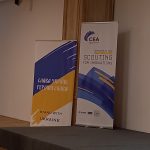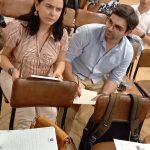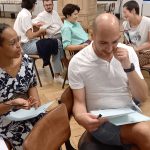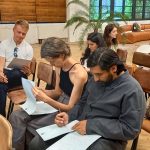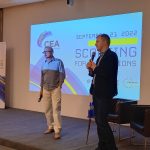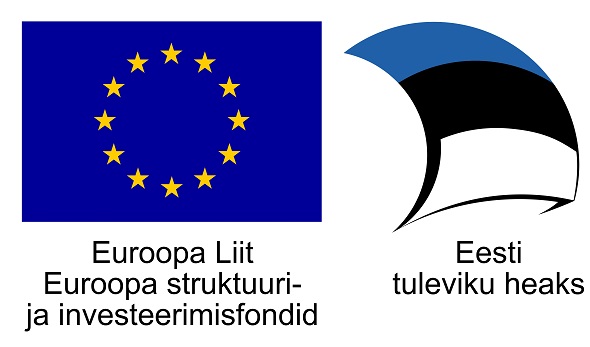The formula for success: a balance of the right skills and mindset
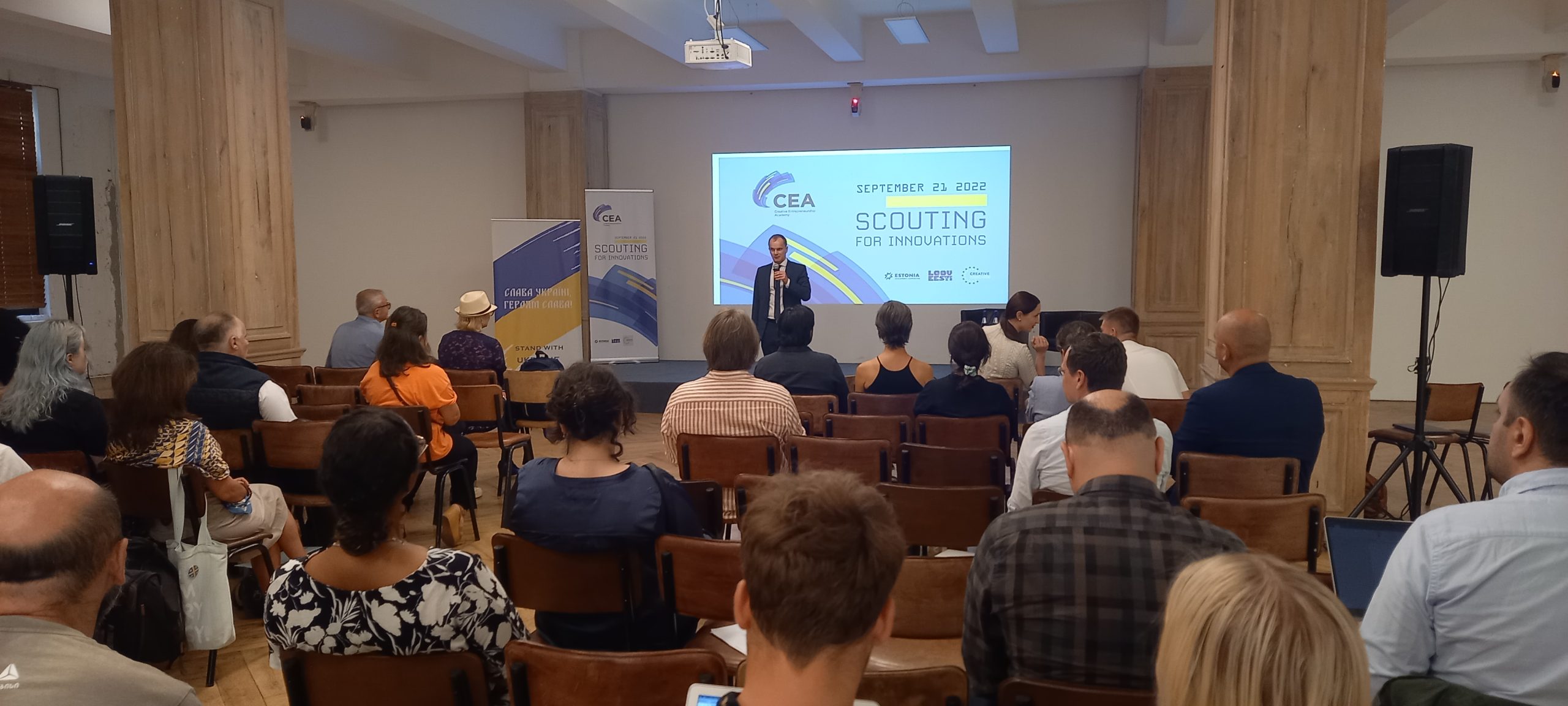
For the sixth time, Creative Estonia had the pleasure to organise the Creative Entrepreneurship Academy conference in Tbilisi. This time we focused on innovation.
Why is innovation needed at all? After all, everyone has a goal to live better. But how? To achieve this, there must be an idea, a clearly formulated problem and a solution. Data collected can point the way to the solution. “Without data, you’re just a person with an opinion,” explains innovation trainer Anu Ruul. She stressed that not every idea is a good one, even those that seem great at first glance need to be evaluated several times. Anu also described in more detail the tools for evaluating your ideas and determining their potential for success.
“Innovation thrives when the right conditions, the right ecosystem, is in place,” said Nana Dikhaminja, Director of the AlteUniversity Centre for Digital Transformation. All innovations start from a collaboration between different sectors, and an innovative idea can open doors to other markets. She gave the example of the development of a space costume, the results of which can also be used, for example, in firefighting and electric car development. In her presentation, she also touched on the bottlenecks in developing innovation in Georgia and pointed out that innovation mindsets should be encouraged in schools. As a joke, he said that Georgian poetry is better than novels – Georgians don’t like to focus on one subject for very long.
The importance of collaboration was also underlined by Rasmus Kalep from the Taltech Mektory Startup Centre. Mektory’s mission is to bring different parties together – researchers, startups, entrepreneurs, and technology experts. Mektory is a good example of creating an ecosystem that is conducive to innovation. Mektory acts as a promoter of the importance of science, a developer of entrepreneurship and a technology transfer agent.
Yrjö Ojasaar presented the investors’ view on innovation. “Investors ONLY invest in innovative companies,” he stressed. An innovative company has a team that is professionally, culturally, and geographically diverse, because only people from different backgrounds can understand the needs in different parts of the world. An idea worth investing in must be scalable across the globe and have a novel and superior solution to an important problem, solved with a innovative business model. To attract investor attention, he suggested identifying in which areas and in what size this or that fund invests before investing.
Introducing the innovation initiatives in Georgia, Sesil Verdzadze, from the UNDP Georgia Accelerator Lab, said that Georgians did not think of themselves as innovators, they first had to start by changing attitudes and explaining the nature of innovation. She gave a closer look at the Georgian Museum of Invention’s campaign to find innovative ideas to save energy. The competition received more ideas than expected – 75 – and the winner will be announced in October. Referring to bottlenecks, he pointed out that Georgians are afraid to set up start-ups for fear of losing a stable income.
Karl Pärtel has actively supported green technologies as co-founder of clean tech start-ups, accelerators and funds. “While cleantech was overlooked in the past, it is now worth over 100 billion and growing by leaps and bounds. Cleantech Estonia + Beamline Accelerator has more than 80 green tech startups on its portfolio, of which about 70% are just creating different devices and about 80% of them are successful,” he said. He presented his experiences with RAIKU, a company that produces packaging material in wood, and Myceen, a company that creates material using mushroom mycelium.
Killu Leet, food technologist and project manager of the Cluster Devoted to Soil Protection, explained why innovation in food is needed. The world’s population will grow to 8.5 billion by 2030 and 9.7 billion by 2050. To feed all of these people, we will need to produce 70% more food on 10 million hectares less land. So let’s rack our brains for solutions. Killu talked in more detail about how to ensure soil sustainability and what other plant foods can be developed. But why are plants being used to develop e.g. artificial meat? Because humans cannot get enough protein from plant foods alone. “You can find a man who can eat several kilos of meat, but you can’t find a man who can eat 12 kilos of grapes,” said Killu. Research-based innovation is needed by farmers, food consumers, governments and investors. A number of food technology development centers are actively engaged in finding new ways of producing food.
Indrek Maripuu, the creative trainer who led the workshop on generating new ideas, said that our brains don’t like innovation or brainstorming. How to overcome this? You have to give your ideas different contexts. How you phrase your challenge is also critical – the wording can bend your ideas in a different direction. During the workshop, participants looked for ideas on how to stimulate innovation in Georgia. The best ideas were collected and passed on to those who can implement them.
Feedback
The Conference was organised by Creative Estonia and Creative Csucasus and funded by Estonian Development Cooperation fund

